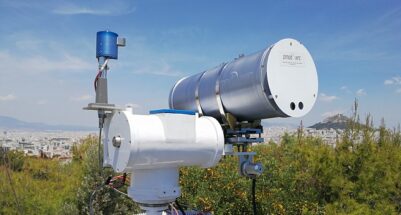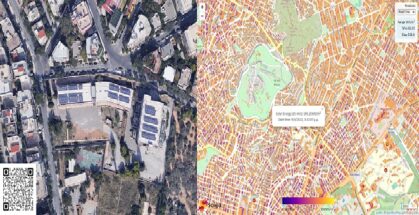OVERVIEW
a. Mission
Strategies towards avoiding climate change effects are leading to the use of renewable energy. To meet the Paris Agreement commitments, the European Union aims to increase solar energy related photovoltaic (PV) capacity by 6 times the current levels by 2030, while globally, the installed capacity is expected to reach 18 times the current levels by 2050. Solar energy applications (SOLEA) is a group that contributes to the scientific knowledge on solar radiation measurements and modeling research and also the development of applications related to renewable energy exploitation, planning and management. The measurements are related to solar radiation parameters and atmospheric parameters affecting solar radiation (spectral actinometric platform) at Thiseio, Athens. SOLEA deals with energy transition, solar plants exploitation and penetration into society, providing operatonally and in real-time solar radiation and energy data in terms of historical (>20 years), nowcasts (0 – 6 hours ahead) and forecasts (1 – 5 days ahead). To this direction, state-of-the-art ray tracing techniques in conjunction with computer vision and earth observations were utilized and evolved, focusing on smart cities solutions but also expanding to global scale. Finally, solar radiation related applications for health and agriculture are included.

b. Research Focus
The research focus of SOLEA is related to the measurements of solar radiation and atmospheric composition parameters (Cirocco and Aspire projects), the solar energy nowcasting, forecasting and modeling development (H2020 project e-shape) and the development of smart renewable cities related applications (H2020 project Eiffel).
c. Main Scientific Directions
The main scientific directions deal with Atmospheric Physics (measurements of atmosphere – radiation interactions), solar energy research (simulations of production whatever the weather and conditions), computer science (high performance cloud computing, computer vision, graphic creation platforms), radiative transfer modeling for energy, health and agriculture, forecasting (deterministic and probabilistic), remote sensing from satellites and finally smart grids. More specifically:
- Solar energy resource mapping, monitoring, nowcasting and forecasting: Provision of climatological and real-time services in support to energy management and planning.
- Radiative Transfer: Simulation of the interactions between solar irradiance and atmospheric parameters.
- Renewable Energy: Simulation of produced energy from solar photovoltaics. Impacts of atmospheric parameters in solar energy potential in a climatological and operational basis.
- Solar effects on health: Simulation of ultraviolet index, DNA damage and vitamin D efficiency and impacts on human health.
- Aerosol direct radiative effect: Impacts of aerosols on solar radiation and energy production.
- Development and exploit EO-based climatological databases of solar irradiances in terms of global horizontal and tilted irradiance (applies to PV) and direct normal irradiance (applies to CSP).
- Provision of added value services related with socio economic relevance of solar energy exploitation, management, transmission and use.
- Solar radiation and atmospheric monitoring in Athens focusing on research collaborations and public authorities’ awareness.
- Satellite validation activities based on ground based solar spectral measurements.


